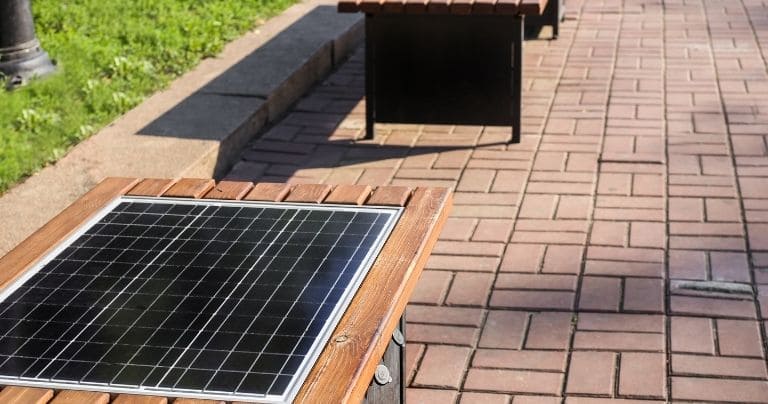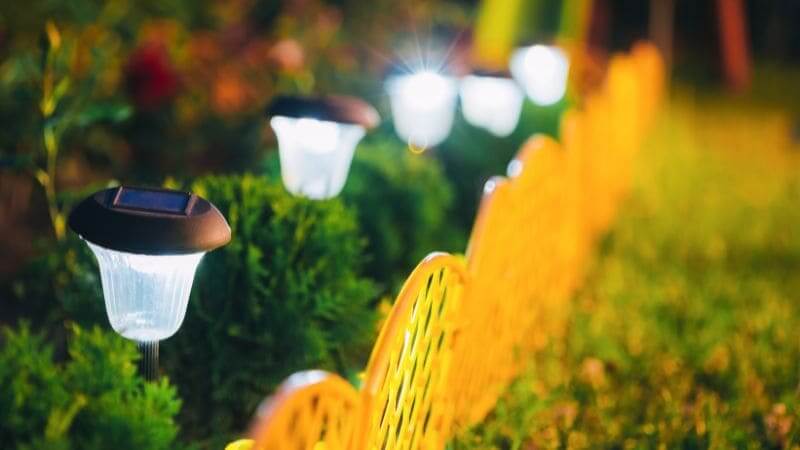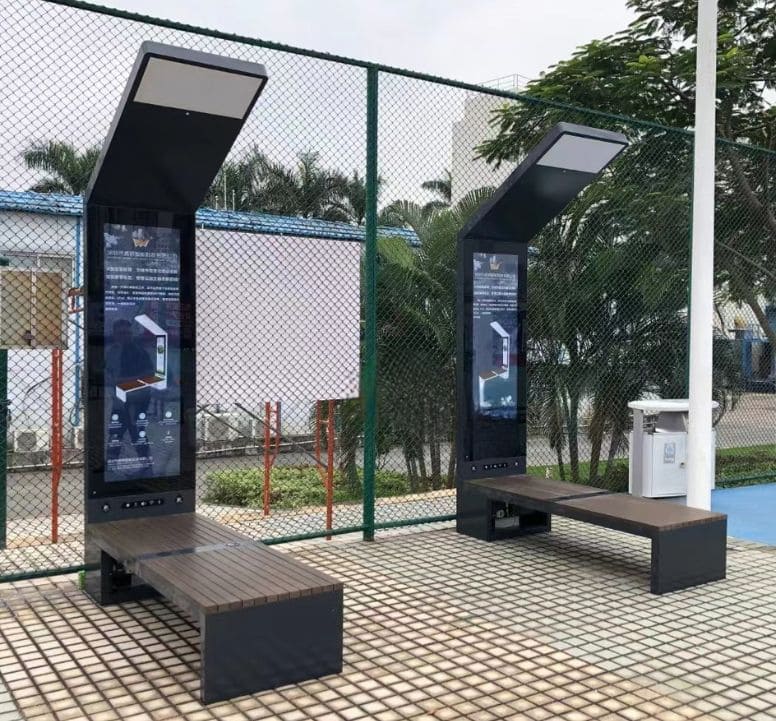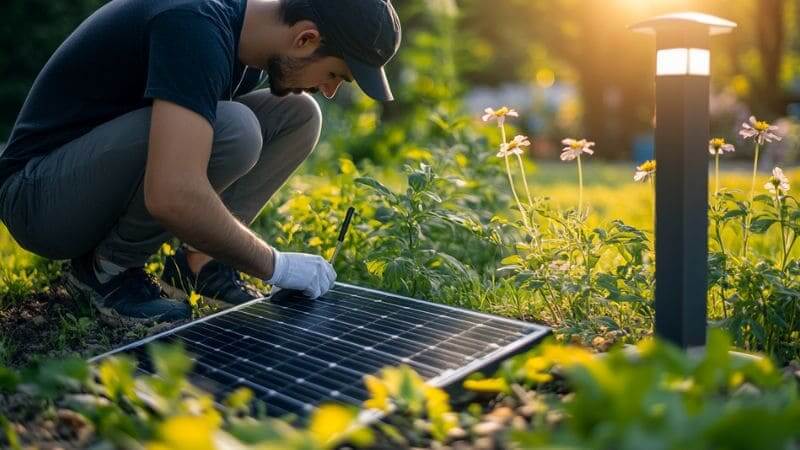In a time when going green and being innovative are top priorities, everyone is looking for public facilities that match these ideals. As someone well-versed in solar technology, I understand how tough it can be for companies and local governments to find products that are both good for the planet and easy on the wallet. Especially in Japan, where electricity costs are much higher in globally, the search for cost-effective, eco-friendly solutions is even more pressing.
Solar-powered benches provide a groundbreaking alternative to traditional public seating, offering not just a place to sit but also a way to charge devices. When it comes to cost analysis, these benches are particularly advantageous in Japan, where electricity rates are among the highest in the world. Unlike traditional benches, solar-powered options eliminate the need for electrical wiring and the ongoing costs of electricity, making them a financially smart choice in the long run.
Let’s get into the numbers to see why solar-powered benches are both eco-friendly and cost-effective in Japan. Curious? Keep reading for a detailed cost comparison.

How Do Solar Benches and Traditional Benches Differ in Functionality?
Solar benches and traditional benches are worlds apart in terms of functionality. While traditional benches serve the basic purpose of providing seating, solar benches go above and beyond. They are not just seats but multifunctional hubs that offer a range of services from charging your devices to providing WiFi. And in a country like Japan, where the cost of electricity is high, the benefits are even more pronounced.
No Electricity Required
One of the most striking features of solar benches is that they require no electricity. This is a game-changer in Japan, where electricity costs are among the highest in the world. Traditional benches, if they offer any additional features like lighting, would add to the electricity bill. Solar benches, on the other hand, harness the power of the sun, making them a cost-effective alternative.
High Photoelectricity Conversion Rate
Smart benches are engineered for high photoelectricity conversion rates. This means they are incredibly efficient at converting sunlight into usable energy. In Japan, where space is at a premium, the efficiency of solar benches makes them a smart choice for public spaces.
Extended Illumination
With just a day’s worth of sunshine, these benches can stay illuminated for 3-5 days. This is particularly useful during Japan’s rainy season, ensuring that the benches remain functional even when the sun isn’t shining.
Charging Capabilities
In today’s digital age, finding a place to charge your devices while on the go is a common concern. Solar charging benches address this issue head-on by offering wireless fast charging at 30W and multiple charging ports. This is a boon for both locals and tourists navigating the busy streets of Tokyo or Osaka.
Weatherproof and Durable
Japan experiences a range of weather conditions, from heavy snowfall in Hokkaido to tropical storms in Okinawa. Solar benches are built to be weatherproof, offering a durable and long-lasting solution compared to traditional wooden or metal benches that deteriorate over time.
Customizable Features
Some solar powered benches even offer customizable features like wireless WiFi and Bluetooth speakers. Imagine sitting on a bench in Kyoto, listening to your favorite playlist while your phone charges, all without using any public electricity. It’s not just a bench; it’s an experience.
So, when it comes to functionality, solar benches are clearly in a league of their own, especially in a high-cost electricity market like Japan. They offer a multitude of features that traditional benches can’t match, making them a smart investment for any public space.

What is the Cost of Electricity in Japan?
The cost of electricity in Japan is notably high, with an average rate of approximately $0.26 per kWh. This has significant implications for businesses and public amenities that rely on electrical power for their operations. Smart benches offer a compelling alternative, effectively reducing the electricity cost to zero when deployed in public spaces.
High Electricity Rates: A Challenge for Public Amenities
In Japan, the high cost of electricity is a major concern for municipalities and businesses alike. Traditional benches with added features like lighting or charging ports can incur substantial electricity costs. In cities like Tokyo and Osaka, where public amenities are widely used, these costs can quickly add up, putting a strain on budgets.
Solar Benches: The Zero-Cost Alternative
Solar benches offer a groundbreaking solution to this challenge. By harnessing solar energy, they operate independently of the electrical grid, effectively bringing the cost of electricity to zero. This is a significant advantage, especially when considering the deployment of multiple benches in public parks, tourist spots, and transit stations.
Scalability and Long-Term Savings
The beauty of solar benches lies in their scalability. A single solar bench can save a small amount of money, but when scaled across multiple installations, the savings become substantial. Over time, these savings can be redirected to other essential public services or amenities, making it a financially sound investment.
Aligning with Japan’s Sustainability Goals
Japan has ambitious sustainability goals, aiming to be carbon-neutral by 2050. Solar benches align perfectly with this vision, offering an eco-friendly alternative to traditional benches that rely on fossil-fuel-generated electricity. By adopting solar benches, municipalities can take a step closer to achieving these sustainability targets while also saving money.
In summary, the high cost of electricity in Japan makes solar benches an attractive, cost-effective alternative for public spaces. Not only do they offer a range of functionalities that traditional benches can’t match, but they also align with the country’s long-term sustainability goals. It’s a win-win situation for both the public and the environment.

How Do Maintenance Costs Compare?
While traditional benches may seem cost-effective initially, their long-term maintenance can be financially draining. In contrast, solar benches are engineered for durability and require minimal upkeep, making them a more economical choice in the long run.
The Hidden Costs of Traditional Benches
Traditional benches, often made from wood or metal, are susceptible to wear and tear from weather conditions and frequent use. This necessitates periodic maintenance activities such as repainting, varnishing, and part replacements. Over the years, these costs can accumulate, making traditional benches less cost-effective than they initially appear.
Durability and Robustness of Solar Benches
Solar benches are designed with longevity in mind. Made from weatherproof materials, they are resistant to environmental factors like rain, snow, and UV rays. This robust construction significantly reduces the frequency and extent of maintenance required, thereby lowering long-term costs.
Advanced Features Built to Last
Solar benches come equipped with state-of-the-art features like LED lighting and multiple charging ports. These components are built for durability, further minimizing the need for replacements or repairs. The high-quality materials used in these advanced features ensure that they last longer, providing more value for the investment.
Cost-Benefit Analysis
When you factor in the reduced maintenance costs, solar benches offer a compelling cost-benefit ratio. While the upfront cost may be higher, the long-term savings in maintenance make them a financially sound choice. This is particularly beneficial for public spaces where multiple benches are installed, as the savings can be substantial when scaled.
In summary, solar benches offer a more economical solution when considering long-term maintenance costs. Their robust construction and durable features make them a wise investment, especially in settings where minimizing upkeep is a priority.

How Do They Impact User Experience?
In the age of connectivity, solar benches offer a superior user experience by providing a range of advanced features like fast wireless charging, WiFi, and Bluetooth speakers. Traditional benches, limited to offering just seating, fall short in meeting the modern user’s needs.
The Basic Functionality of Traditional Benches
In Japan, where public spaces are often designed with a minimalist approach, traditional benches serve the basic purpose of providing seating. While this meets a fundamental need, it does little to enhance the user experience in a digitally connected world.
Multi-Functional Solar Benches
Solar benches in Japan are not just places to sit; they are hubs of connectivity. With the country’s focus on technological innovation, these benches are equipped with fast wireless charging ports that cater to the tech-savvy population. Whether it’s a busy Tokyo street or a serene Kyoto park, a solar bench allows users to recharge their devices quickly.
Enhanced Connectivity and Entertainment
Beyond charging, solar benches in Japan often come with free WiFi access, a feature highly valued by both locals and tourists. Some even offer Bluetooth speakers, allowing users to enjoy their favorite music while relaxing outdoors. This multi-functionality transforms a simple bench into a mini leisure and connectivity center.
The Japanese Context
In Japan, where people value both tradition and innovation, solar benches strike a perfect balance. They offer a blend of traditional design aesthetics with modern technological features, making them highly appealing to a wide range of users.
In summary, solar benches significantly elevate the user experience by offering more than just seating. They align well with Japan’s technological landscape, providing functionalities that are both practical and enjoyable.

Are They a Sustainable Option?
Utilizing solar technology in public seating is not just an innovation; it’s a step towards a more eco-friendly future. By harnessing renewable energy, these smart benches contribute to reducing the carbon footprint and encourage environmentally responsible behavior among the public.
Utilizing Renewable Energy
One of the most compelling features of these benches is their reliance on solar power, a renewable resource. Unlike conventional seating that may require grid electricity for lighting or other features, these units are self-sufficient. They collect and store energy from the sun during the day, which can then be used for various functionalities like lighting and device charging, thereby reducing dependency on fossil fuels.
Carbon Footprint Reduction
Solar charging station contribute to lowering the carbon footprint in multiple ways. First, by using solar energy, they eliminate the emissions associated with electricity production from non-renewable sources. Second, their durable and weather-resistant design means they last longer, reducing the need for frequent replacements and thereby minimizing waste.
Encouraging Eco-Friendly Practices
The presence of these solar-powered units in public spaces serves as a constant reminder of the importance of sustainability. By offering features like device charging through renewable energy, they subtly promote responsible environmental practices among the public.
In summary, Solar powered benches are more than just a convenient amenity; they are a sustainable choice that aligns with global efforts to combat climate change. Their use of renewable energy, contribution to reducing the carbon footprint, and role in promoting eco-conscious behavior make them an excellent option for modern public spaces.

Conclusion
Solar powered benches are not just an eco-friendly alternative to traditional benches; they are a financially sound investment, especially in high-cost electricity markets like Japan. They offer multiple benefits, from reducing electricity and maintenance costs to providing additional revenue streams and enhancing user experience.
In a world increasingly focused on sustainability and innovation, the choice is clear: solar benches are the future of public amenities.










